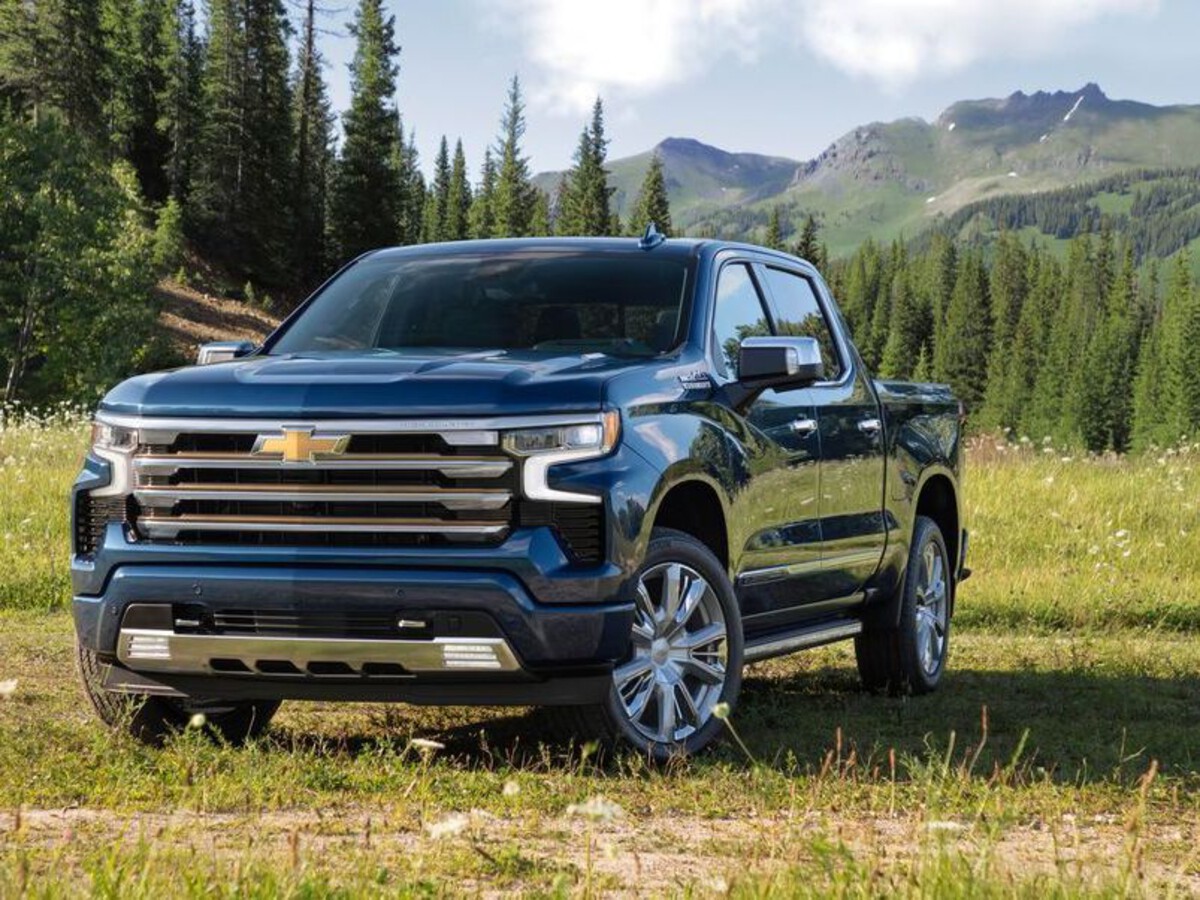In today’s world of sophisticated automotive technology, truck security has become a critical battleground between manufacturers and criminals. The dichotomy between modern security-laden vehicles and older, more vulnerable models has never been more pronounced.
While some trucks feature cutting-edge anti-theft systems that can immobilize a vehicle within seconds of unauthorized access, others remain surprisingly vulnerable to theft techniques that haven’t changed much in decades.
The evolution of truck security reflects broader technological advancements in the automotive industry. Modern trucks often incorporate multiple layers of protection, including advanced engine immobilizers, GPS tracking systems, biometric access controls, and even artificial intelligence-powered theft detection.
These systems work in concert to create formidable barriers against theft, often rendering stolen vehicles completely inoperable even if criminals manage to gain physical access.
Conversely, certain truck models, particularly older vehicles or those designed with minimal security features remain surprisingly vulnerable to traditional theft methods.
The absence of sophisticated electronic protection systems means these vehicles can often be started and driven away using relatively simple techniques that have been employed by car thieves for generations.
Understanding these security disparities is crucial for truck owners, fleet managers, and anyone involved in the commercial vehicle industry. The financial implications of truck theft extend far beyond the vehicle’s replacement cost, encompassing cargo loss, business disruption, insurance complications, and potential safety hazards.
This comprehensive analysis examines ten specific truck models that represent the extremes of automotive security, providing insights into what makes some vehicles nearly theft-proof while others remain easy targets for determined criminals.
5 Trucks That Shut Down When Stolen
These technologically advanced pickup trucks feature sophisticated engine immobilizer systems that create an impenetrable electronic barrier between theft attempts and successful vehicle operation.
Their encrypted transponder technology communicates with engine control modules using dynamic security codes that change with each ignition cycle, making traditional hotwiring methods completely ineffective against modern anti-theft engineering.
When unauthorized access is detected, these systems immediately disable critical engine functions, including fuel injection timing, spark control, and starter motor engagement, leaving thieves with nothing but an expensive paperweight regardless of their mechanical skills.
Electronic immobilizers prevent the vehicle’s engine from starting unless the correct key or transponder is used, making them most effective at preventing criminals from hot-wiring the vehicle and ensuring that even professional thieves equipped with basic tools cannot simply drive away with these protected trucks.
1. Ford F-150 Lightning (2022-Present)
The Ford F-150 Lightning represents the pinnacle of modern truck security, combining traditional anti-theft measures with cutting-edge electric vehicle technology to create an almost impenetrable defense system.
This electric pickup truck incorporates multiple security layers that work synergistically to prevent unauthorized use and quickly disable the vehicle if theft is detected.
At the heart of the Lightning’s security system is Ford’s advanced Smart Key technology, which utilizes rolling code encryption that changes with each use. This system makes it virtually impossible for thieves to intercept and replicate the key signal using traditional scanning devices.
The truck’s proximity sensors can detect the authorized key fob from several feet away, automatically unlocking doors and enabling engine start only when the correct key is present. The Lightning’s electric powertrain adds another layer of security through its sophisticated battery management system.
Unlike traditional internal combustion engines that can be hot-wired through relatively simple electrical bypasses, the Lightning’s high-voltage system requires multiple authentication protocols before allowing power delivery to the drive motors. The vehicle’s computer continuously monitors for unauthorized access attempts, and any irregularities trigger immediate system lockdown.
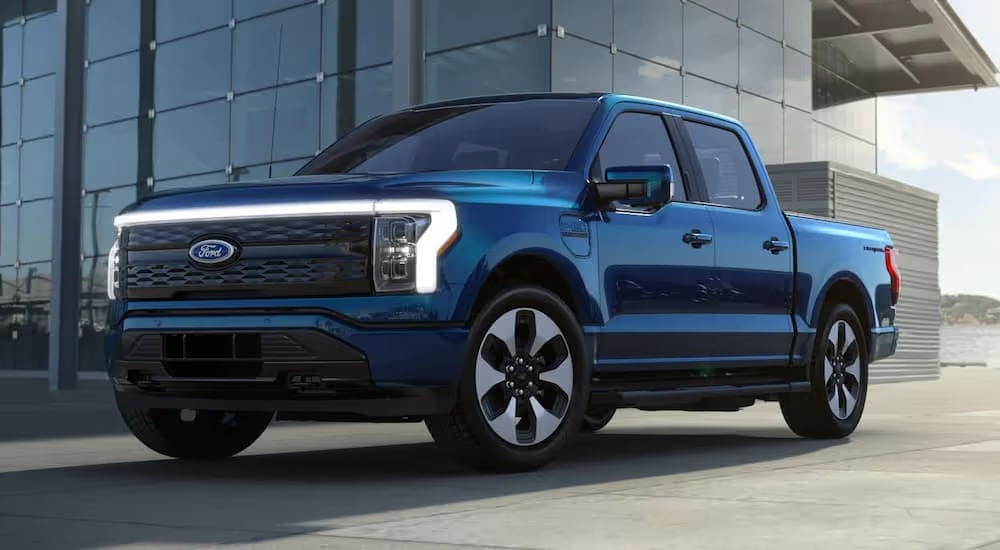
Ford’s FordPass Connect system provides real-time vehicle monitoring and remote control capabilities. If the truck is moved without proper authorization, the system immediately sends alerts to the owner’s smartphone while simultaneously transmitting GPS coordinates to Ford’s security monitoring center.
The owner can remotely disable the vehicle, preventing further movement and making recovery significantly easier for law enforcement. The Lightning also features an advanced alarm system with motion sensors, glass break detection, and perimeter monitoring.
These sensors can differentiate between normal environmental factors and suspicious activity, reducing false alarms while maintaining high security sensitivity. When triggered, the system activates lights, sounds alarms, and sends immediate notifications to connected devices.
Perhaps most importantly, the Lightning’s over-the-air update capability means its security features continuously evolve. Ford regularly pushes security patches and enhancements directly to the vehicle, ensuring protection against newly discovered vulnerabilities or emerging theft techniques.
This dynamic security approach makes the Lightning increasingly difficult to steal as time progresses, unlike traditional vehicles whose security remains static after manufacture.
2. Ram 1500 TRX (2021-Present)
The Ram 1500 TRX combines raw performance with sophisticated security technology, creating a fortress-like protection system that makes unauthorized operation nearly impossible.
Stellantis has equipped this high-performance truck with multiple overlapping security systems that create redundant protection layers, ensuring that even if one system is compromised, others remain active to prevent theft.
The TRX’s security foundation begins with its advanced key fob system, which employs military-grade encryption and frequency-hopping technology.
This system constantly changes its communication frequency and encryption codes, making it extremely difficult for criminals to intercept or duplicate the signal.
The key fob also features proximity detection that automatically locks or unlocks the vehicle based on the authorized user’s location, eliminating opportunities for unauthorized access during brief absences.
Central to the TRX’s anti-theft strategy is its engine immobilizer system, which prevents engine startup without proper key authentication. This system involves multiple verification steps, including transponder chip recognition, ECU communication protocols, and biometric verification options.
Even if criminals manage to access the vehicle’s interior and attempt traditional hot-wiring techniques, the immobilizer prevents fuel injection and ignition system activation.
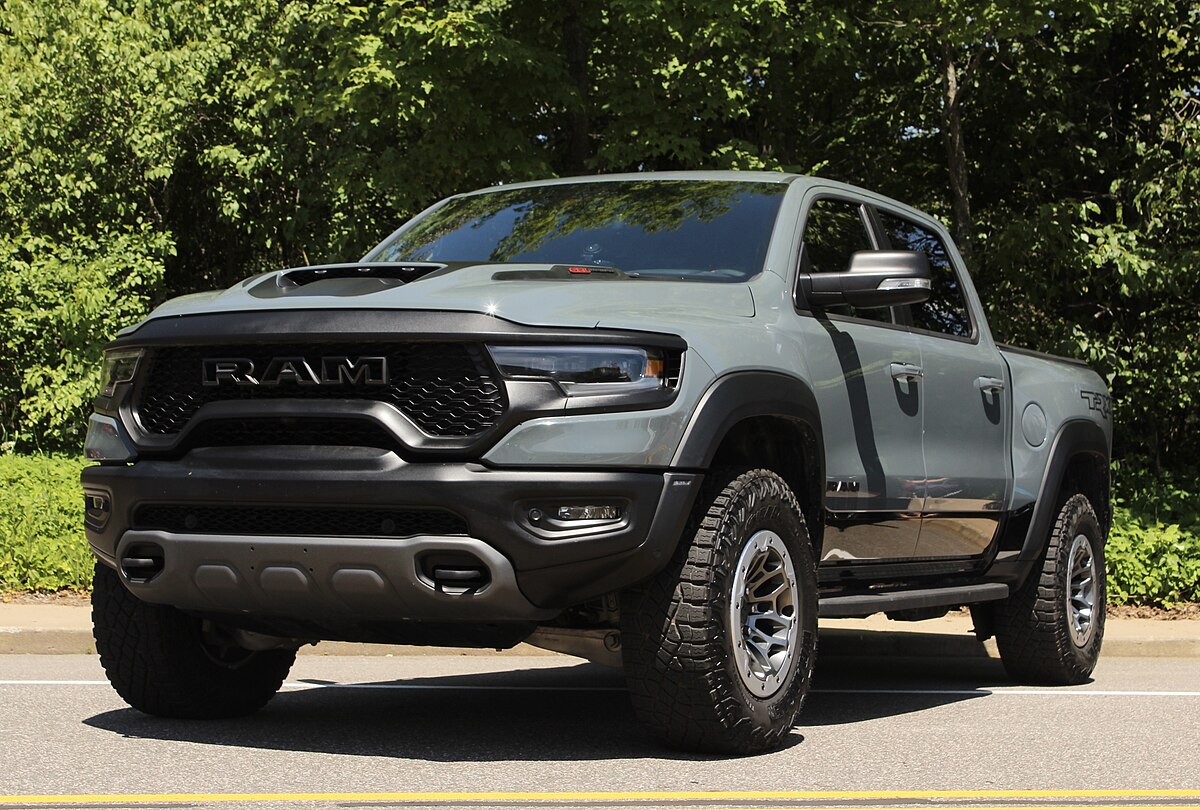
The TRX incorporates Stellantis’s Uconnect system with Guardian services, providing comprehensive vehicle monitoring and emergency response capabilities.
This system maintains constant communication with Stellantis’s security monitoring centers, automatically transmitting alerts when unauthorized movement is detected.
The Guardian service can remotely disable various vehicle systems, including engine operation, fuel pump activation, and transmission engagement, effectively stranding the vehicle regardless of the thief’s technical capabilities.
Advanced GPS tracking with cellular backup ensures continuous location monitoring even in areas with poor cellular coverage. The system employs multiple communication protocols and can switch between different networks to maintain connectivity.
If the primary GPS is tampered with or disabled, backup systems activate automatically, continuing to transmit location data to monitoring centers and authorized users.
The TRX also features a comprehensive sensor array that monitors various vehicle parameters for signs of unauthorized access or operation. These sensors detect unusual vibrations, unexpected electrical activity, forced entry attempts, and abnormal engine operating conditions.
When suspicious activity is detected, the system can automatically activate various countermeasures, including engine shutdown, transmission lockout, and alert transmission to security services.
3. Chevrolet Silverado 1500 High Country (2022-Present)
General Motors has equipped the Chevrolet Silverado 1500 High Country with OnStar Guardian, one of the most comprehensive vehicle security systems available in the truck market.
This system represents decades of GM’s investment in connected vehicle technology, creating a security ecosystem that makes theft extremely difficult and recovery highly probable even in worst-case scenarios.
The Silverado’s security begins with its advanced key recognition system, which utilizes encrypted transponder technology combined with proximity sensors and user authentication protocols.
The system requires multiple verification steps before allowing vehicle startup, including physical key presence, transponder authentication, and user behavior pattern recognition.
This multi-factor authentication approach makes it extremely difficult for unauthorized users to operate the vehicle even with physical access to keys. OnStar’s Stolen Vehicle Assistance represents the cornerstone of the Silverado’s anti-theft protection.
When theft is reported, OnStar can remotely access the vehicle’s systems to monitor location, disable engine operation, prevent restart after shutdown, and even slow the vehicle safely to minimize pursuit dangers. The system maintains communication with law enforcement agencies, providing real-time location updates and coordinating recovery efforts.
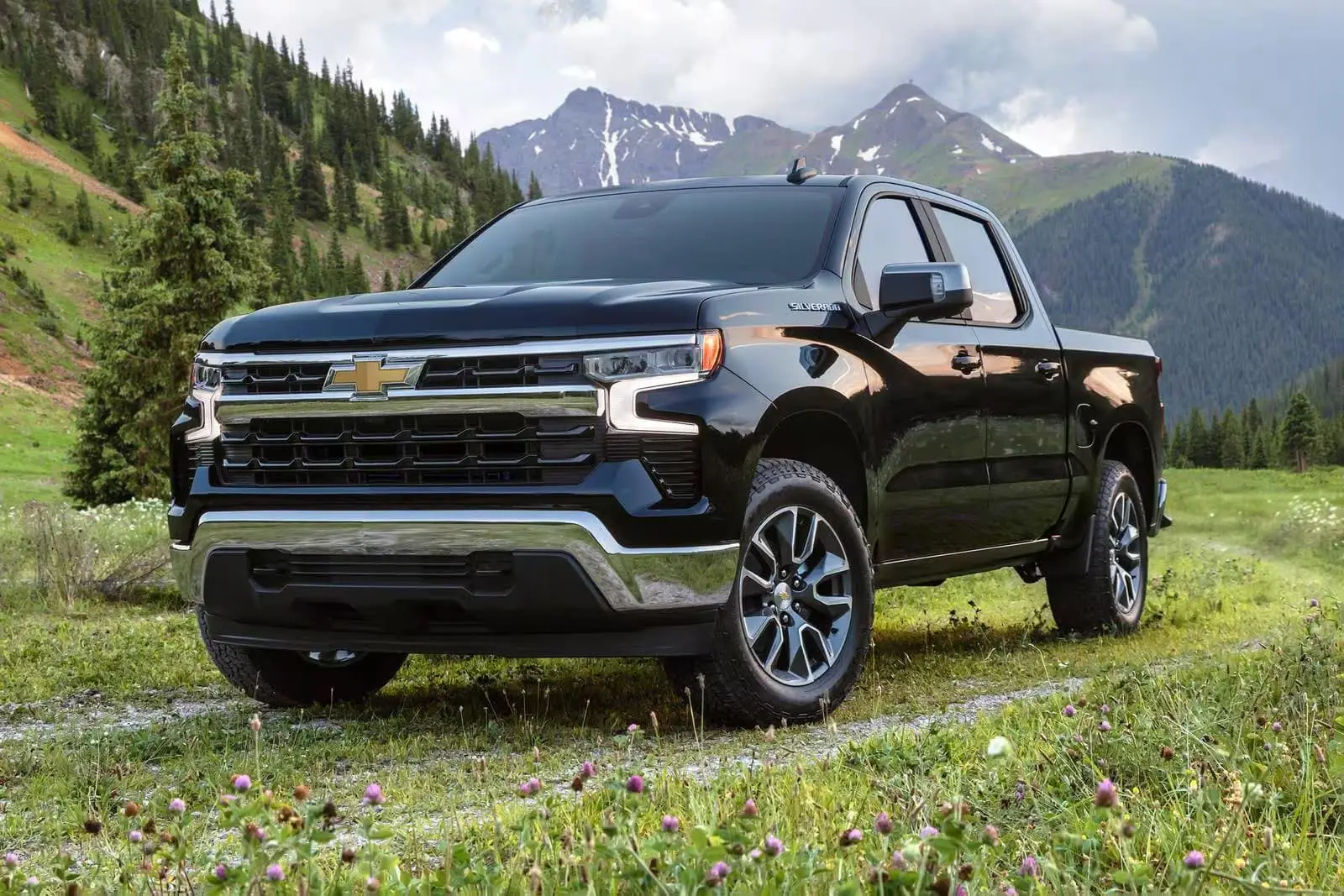
The Silverado incorporates GM’s Vehicle Care package, which provides continuous monitoring of vehicle health and security status. This system can detect unauthorized access attempts, unusual electrical activity, and abnormal operating patterns that might indicate theft or tampering.
When suspicious activity is detected, the system automatically initiates security protocols while simultaneously alerting OnStar monitoring centers and authorized users.
Advanced telematics integration allows the Silverado to communicate with other GM vehicles and infrastructure systems, creating a network effect that enhances security capabilities.
If the vehicle is reported stolen, other connected GM vehicles in the area can assist with location tracking and monitoring, while traffic management systems can be alerted to watch for the vehicle’s movement patterns.
The High Country model includes additional security features such as premium alarm systems, motion sensors, and glass break detection. These systems work in conjunction with OnStar services to provide comprehensive protection against various theft scenarios.
The integration between physical security systems and connected services creates redundant protection layers that make successful theft extremely challenging. Perhaps most importantly, the Silverado’s security system includes theft deterrent features that activate even before theft attempts occur.
The visible OnStar branding, security system indicators, and connected vehicle technology serve as powerful deterrents that often prevent theft attempts entirely, as criminals typically avoid vehicles with sophisticated security systems in favor of easier targets.
4. GMC Sierra 1500 Denali (2022-Present)
The GMC Sierra 1500 Denali shares General Motors’ advanced security platform with the Chevrolet Silverado but incorporates additional premium features and enhanced integration that create an even more robust anti-theft system.
As GMC’s flagship luxury truck, the Sierra Denali receives priority access to GM’s latest security innovations and benefits from enhanced OnStar service levels.
The Sierra Denali’s security system begins with its sophisticated key management technology, which goes beyond traditional transponder systems to include biometric recognition capabilities and user behavior analysis.
The system learns authorized users’ behavior patterns, including approach angles, key handling methods, and typical usage times. When these patterns deviate significantly from established norms, the system triggers additional authentication requirements or security alerts.
OnStar Guardian Plus services, exclusive to Denali models, provide enhanced monitoring capabilities and faster response times compared to standard OnStar offerings.
This premium service includes dedicated security specialists, priority communication channels, and enhanced law enforcement coordination. The system maintains redundant communication pathways to ensure connectivity even in challenging environments or when criminals attempt to disable communication systems.
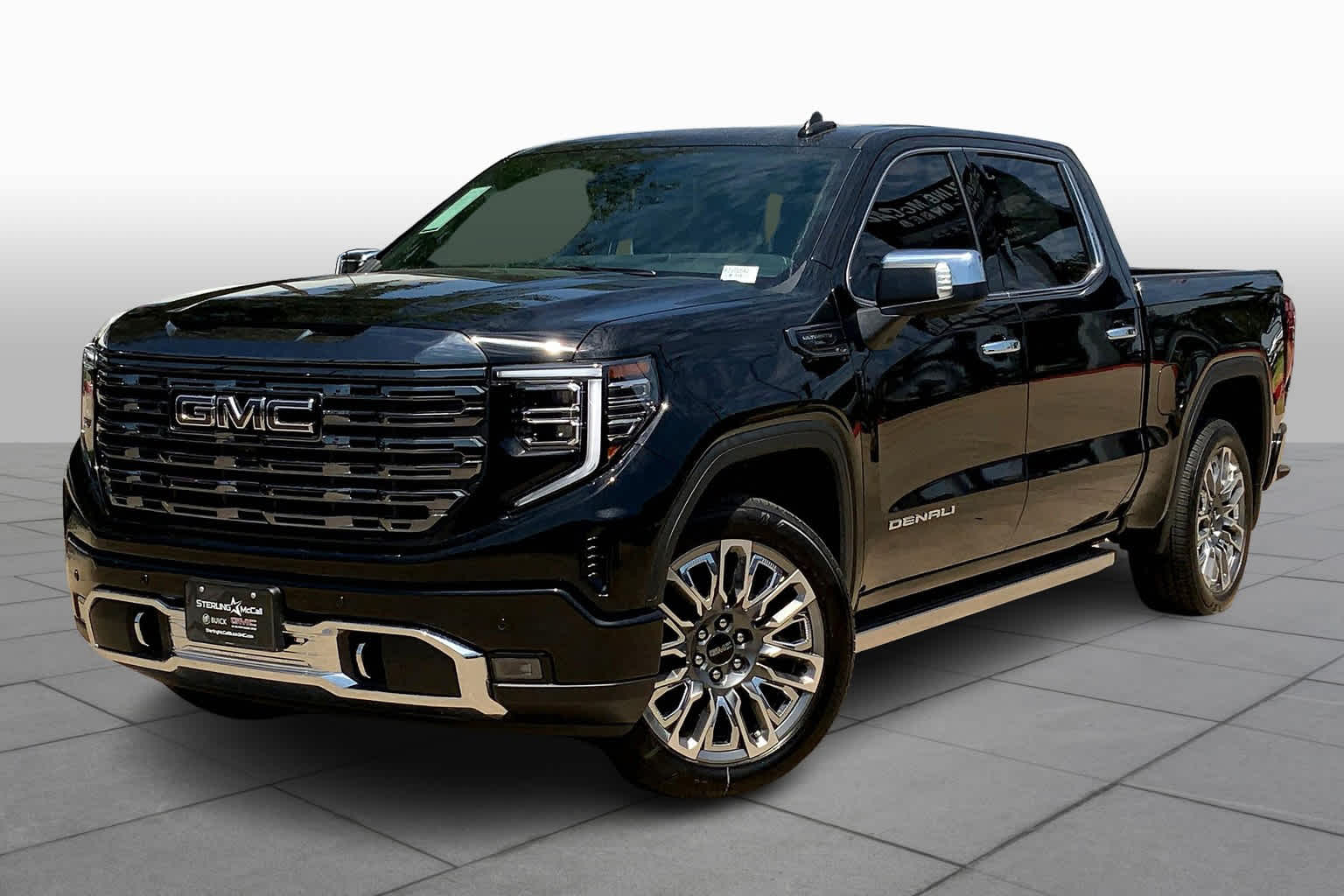
The Sierra Denali incorporates GM’s latest artificial intelligence algorithms that analyze vehicle usage patterns and environmental factors to predict and prevent theft attempts.
These systems can identify suspicious activity patterns, unusual approach behaviors, and environmental conditions that commonly precede theft attempts. When risk factors align, the system automatically enhances security posture and alerts monitoring services.
Advanced integration with smart home systems and personal devices creates a comprehensive security ecosystem around the Sierra Denali. The truck can communicate with home security systems, smartphones, and wearable devices to provide seamless monitoring and control capabilities.
This integration allows owners to monitor vehicle status from anywhere and receive immediate alerts about any security concerns. The Sierra Denali’s premium materials and construction methods also contribute to its security capabilities.
Reinforced door locks, laminated security glass, and hardened electronic components make physical theft attempts significantly more difficult and time-consuming.
These features work in conjunction with electronic security systems to create comprehensive protection against both high-tech and traditional theft methods.
Fleet management integration capabilities make the Sierra Denali particularly attractive for commercial applications where security is paramount. The truck can integrate with enterprise fleet management systems, providing detailed tracking, usage monitoring, and security reporting capabilities that help fleet managers maintain comprehensive oversight of their valuable assets.
Also Read: 5 Cars With Fingerprint Start Security and 5 That Still Use Cheap Keys
5. Toyota Tundra Platinum (2022-Present)
Toyota’s approach to truck security in the Tundra Platinum reflects the company’s reputation for reliability and attention to detail, creating a security system that emphasizes consistent performance and long-term effectiveness.
The Tundra’s security features focus on proven technologies implemented with Toyota’s characteristic precision and quality standards. The Tundra Platinum’s security foundation rests on Toyota’s Smart Key System 3.0, which incorporates multiple authentication layers and advanced encryption protocols.
This system utilizes rolling code technology that changes encryption keys with each use, making signal interception and replication extremely difficult.
The key system also includes proximity detection, automatic locking, and push-button start functionality that requires continuous key presence for operation.
Toyota’s Safety Connect services provide comprehensive monitoring and emergency response capabilities specifically designed for the North American market.
This system maintains constant communication with Toyota’s monitoring centers and can provide real-time location tracking, emergency assistance, and stolen vehicle recovery services. The system’s integration with law enforcement agencies ensures rapid response when theft is detected.
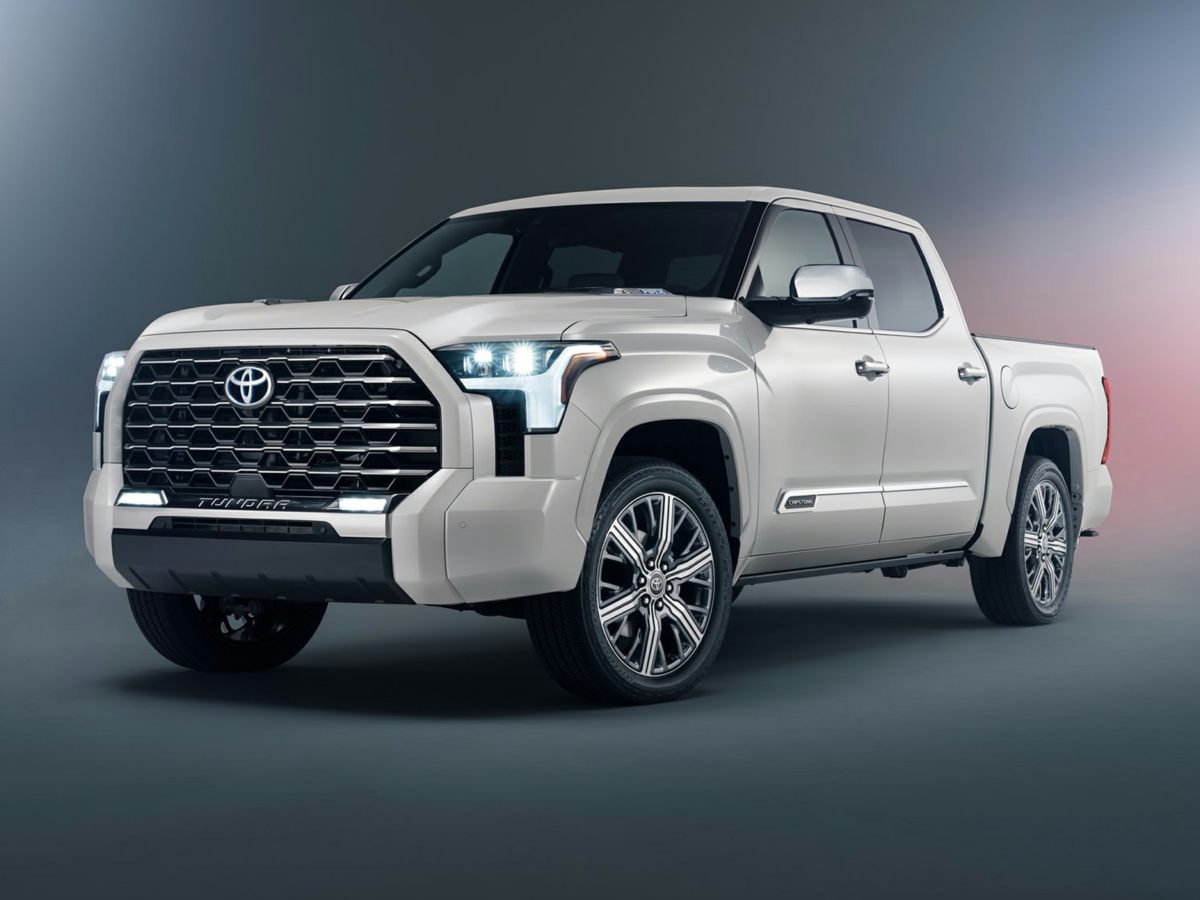
The Tundra incorporates Toyota’s Vehicle Dynamics Integrated Management (VDIM) system, which monitors various vehicle parameters for signs of unauthorized or unusual operation.
This system can detect driving patterns inconsistent with normal operation and can automatically limit vehicle performance or trigger security alerts when suspicious activity is detected. The VDIM system’s integration with other vehicle systems allows for coordinated security responses.
Advanced alarm systems in the Tundra Platinum include motion sensors, glass break detection, and intrusion monitoring that work together to detect various theft scenarios.
These systems are calibrated to minimize false alarms while maintaining high sensitivity to genuine security threats. The alarm system integrates with the vehicle’s lighting and horn systems to create attention-grabbing alerts that deter theft attempts.
Toyota’s commitment to long-term reliability extends to the Tundra’s security systems, which are designed to maintain effectiveness throughout the vehicle’s operational life.
Unlike some systems that may degrade over time or become obsolete, Toyota’s security features receive regular updates and maintenance through the dealer network, ensuring continued protection against evolving theft techniques. The Tundra Platinum also benefits from Toyota’s reputation in the criminal community as a difficult target.
The brand’s association with reliable, well-engineered security systems creates a deterrent effect that often prevents theft attempts entirely, as criminals typically prefer targets they perceive as easier to steal and less likely to be quickly recovered.
5 Trucks That Can Be Driven Off in Seconds
Despite their rugged appearance and high value, certain pickup truck models remain surprisingly vulnerable to theft due to fundamental security flaws that criminals have learned to exploit with disturbing efficiency and widespread knowledge sharing.
The most stolen pickup truck in 2023 was the 2001-02 and 2006 Chevrolet Silverado, demonstrating how older models lacking modern immobilizer technology become prime targets for organized theft rings.
Recent reports indicate that theft of GM trucks is getting crazy throughout Texas and the southern United States, with thieves able to easily swap the ECM/key out in just a few minutes and drive away even when additional security measures are installed.
The Ford F150 Series Pickup was one of the 10 most stolen cars, with 15,852 thefts in 2023, while the Silverado was the 3rd most stolen vehicle in 2023, highlighting how these popular work trucks combine high desirability with exploitable security weaknesses.
1. 1999-2006 Chevrolet Silverado 1500
The 1999-2006 generation Chevrolet Silverado 1500 represents one of the most vulnerable truck models to theft, primarily due to its reliance on outdated security technology and construction methods that predate modern anti-theft innovations.
This generation of Silverado was designed during an era when automotive security was primarily focused on physical deterrents rather than electronic protection systems.
The primary vulnerability of these Silverados lies in their simple electrical systems and mechanical lock mechanisms. The ignition system relies on basic electrical circuits that can be easily bypassed using readily available tools and techniques.
The steering column construction allows relatively easy access to ignition wiring, and the lack of engine immobilizer technology means that once electrical circuits are connected, the engine will start and run normally.
Door locks on these Silverados utilize traditional mechanical tumblers that are susceptible to various bypass techniques, including lock picking, bump keys, and forced entry methods.
The lock cylinders are often worn after years of use, making them even more vulnerable to manipulation. Many of these trucks also suffer from lock cylinder failure, leading owners to rely solely on remote keyless entry systems that can be defeated through signal interception or simple jamming techniques.
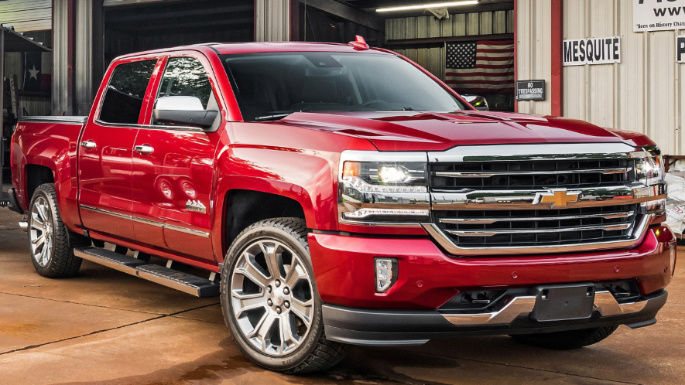
The absence of modern transponder key technology represents perhaps the most significant security weakness. These Silverados typically use traditional metal keys without embedded chips or encryption, meaning that duplicate keys can be easily created by anyone with access to the original or knowledge of the key pattern.
The ignition system accepts any properly cut key, regardless of authorization status. Window construction in this generation provides another vulnerability point. The trucks often feature single-pane glass that can be quickly broken with minimal noise using specialized tools.
Once interior access is gained, the simple electrical systems can be rapidly bypassed to enable theft. The lack of laminated security glass makes forced entry significantly easier compared to modern vehicles.
The steering systems in these Silverados lack modern anti-theft features such as steering wheel locks or column immobilizers. Once electrical systems are bypassed, thieves have full steering control without additional security challenges.
The manual transmission models are particularly vulnerable as they don’t require complex electronic systems to operate, allowing thieves to drive away immediately after gaining access.
Perhaps most concerning is the widespread availability of information about these vulnerabilities. Online forums, instructional videos, and criminal networks have extensively documented the specific techniques required to steal these vehicles.
This knowledge dissemination has made theft attempts more efficient and successful, contributing to higher theft rates for this generation of Silverado.
2. 2004-2008 Ford F-150
The 2004-2008 Ford F-150 generation suffers from similar security vulnerabilities to its Chevrolet counterpart, but with some unique weaknesses that make it particularly attractive to thieves.
Ford’s approach to security during this period emphasized traditional physical deterrents over electronic protection, creating multiple vulnerability points that experienced criminals can exploit rapidly.
The F-150’s ignition system during this period utilized relatively simple electrical circuits that can be bypassed through well-known techniques. The steering column design provides accessible entry points for electrical manipulation, and the lack of sophisticated engine management security means that once ignition circuits are connected, the truck operates normally.
The simplicity of the electrical system, while providing reliability benefits, creates significant security weaknesses. Ford’s PATS (Passive Anti-Theft System) was available on some models during this period, but implementation was inconsistent and the technology was relatively primitive compared to modern standards.
Many base model F-150s lacked PATS entirely, while others had systems that could be defeated through various bypass techniques. Even when present, PATS often suffered from reliability issues that led owners to disable the system, inadvertently eliminating their vehicle’s primary theft protection.
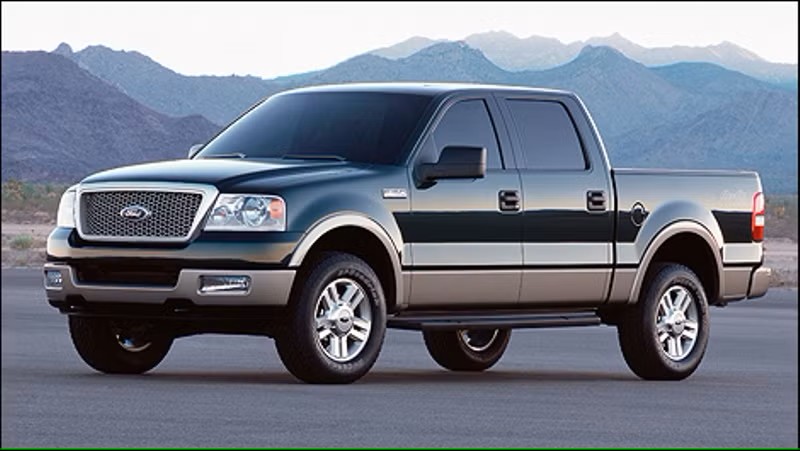
Lock cylinder quality in this generation of F-150s has proven problematic over time, with many trucks experiencing wear that makes lock manipulation significantly easier.
The door handle and lock mechanisms are also susceptible to forced entry techniques that can provide quick access without extensive damage or noise. Weather exposure and age have exacerbated these vulnerabilities in many surviving examples.
The F-150’s popularity and high production volumes have created extensive aftermarket knowledge about defeat techniques. Parts availability and widespread familiarity with these trucks among mechanics and enthusiasts have inadvertently provided criminals with detailed knowledge about vulnerabilities and bypass methods.
This information accessibility has contributed to higher theft success rates. Certain trim levels and configurations are particularly vulnerable, especially regular cab models with manual transmissions and minimal electrical systems.
These trucks can often be started and driven without any electronic key recognition, making them extremely attractive targets for thieves seeking quick, uncomplicated theft opportunities.
The widespread use of these F-150s in fleet applications has also contributed to security vulnerabilities. Many fleet vehicles were configured with master key systems or simplified security features to facilitate multiple-user access, creating additional vulnerability points that criminals have learned to exploit.
3. 1988-2002 Chevrolet C/K Series
The Chevrolet C/K series trucks from 1988-2002 represent some of the most theft-vulnerable vehicles ever produced, combining outdated security technology with construction methods that prioritize simplicity over protection.
These trucks were designed during an era when vehicle theft was addressed primarily through insurance rather than prevention, resulting in minimal built-in security features.
The electrical systems in C/K series trucks are remarkably simple and accessible, utilizing basic wiring harnesses and minimal electronic components.
The ignition system can typically be bypassed in under thirty seconds using basic tools and techniques that require minimal skill or experience. The steering column construction provides easy access to critical wiring, and the lack of any electronic protection means successful electrical bypass immediately enables vehicle operation.
Mechanical security features are equally inadequate by modern standards. Door locks utilize simple tumbler mechanisms that are susceptible to numerous bypass techniques including picking, bumping, and impression methods.
The lock cylinders are often worn after decades of use, making manipulation even easier. Many of these trucks also suffer from broken or malfunctioning lock mechanisms, leading owners to rely on habit rather than security.
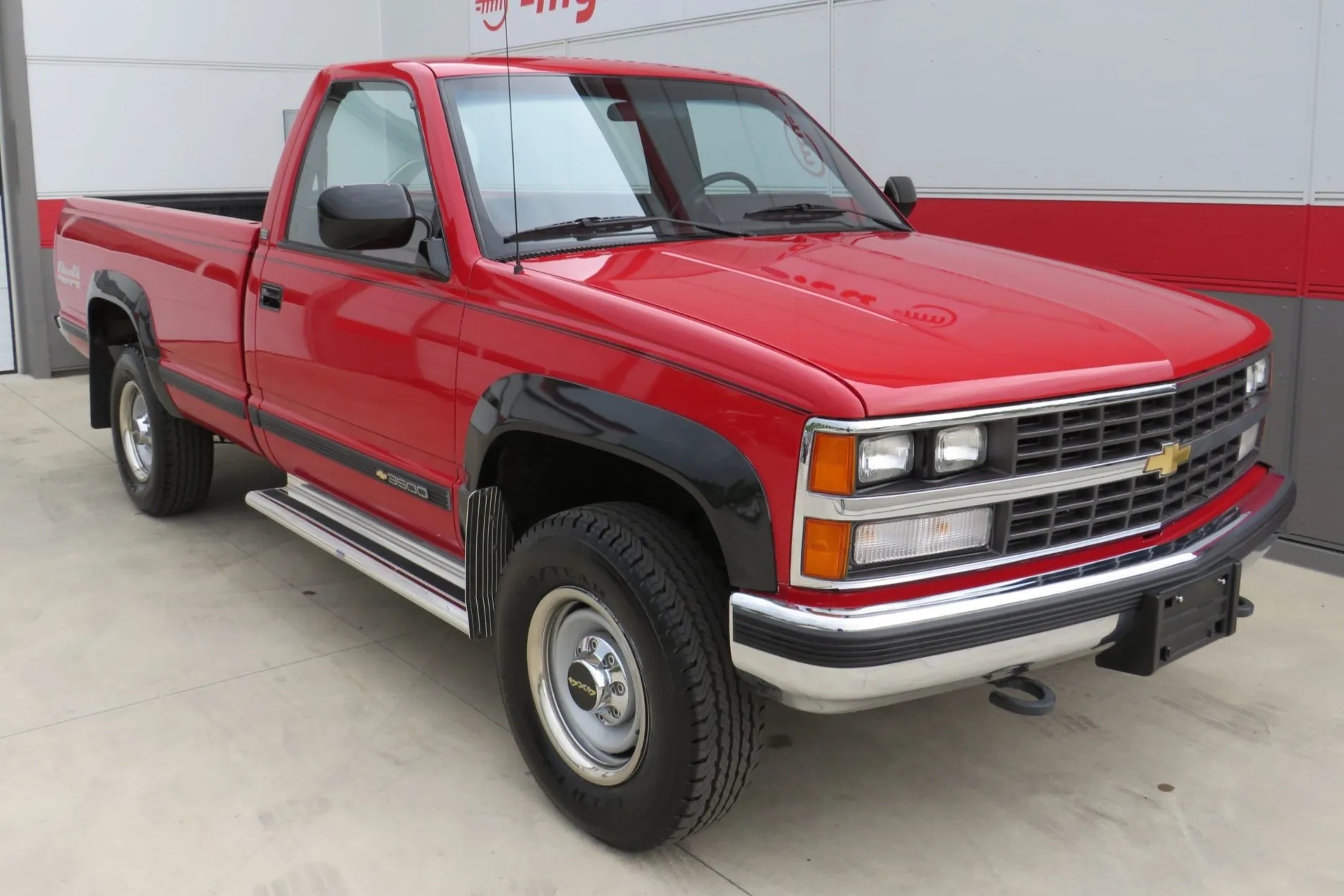
The complete absence of engine immobilizer technology represents the most significant vulnerability. Once electrical circuits are connected, these trucks will start and run indefinitely without any authentication requirements.
The mechanical nature of most engine systems means that electronic security integration is impossible without extensive modification. Physical construction methods also contribute to vulnerability.
Single-pane glass, lightweight door frames, and accessible electrical systems make forced entry relatively simple and quick. The trucks’ simple mechanical systems mean that once access is gained, no additional electronic hurdles exist to prevent theft completion.
The popularity and longevity of these trucks have created extensive criminal knowledge networks. Decades of these vehicles on the road have allowed theft techniques to be refined and disseminated widely.
The commonality of these trucks also means that stolen vehicles blend easily into normal traffic, making detection and recovery more difficult. Perhaps most concerning is the complete lack of tracking or recovery systems.
Once stolen, these trucks essentially disappear into the used vehicle market with minimal chance of recovery. The absence of any electronic systems that could aid in location or identification makes law enforcement recovery efforts extremely challenging.
4. 1997-2003 Ford F-150
The 1997-2003 Ford F-150 generation shares many vulnerabilities with later models but includes additional weaknesses that make it even more susceptible to theft.
This generation represents Ford’s transition between purely mechanical systems and early electronic integration, creating security gaps that criminals have extensively exploited. The ignition systems in these F-150s rely on basic electrical circuits with minimal protection against bypass attempts.
The steering column design provides multiple access points for electrical manipulation, and the simplicity of the engine management system means that once ignition circuits are activated, the truck operates without additional authentication requirements.
The lack of sophisticated electronic protection makes theft attempts straightforward for anyone with basic automotive electrical knowledge. Door security mechanisms are particularly vulnerable in this generation.
The lock cylinders utilize simple tumbler designs that have proven susceptible to various manipulation techniques. Age-related wear has made many of these locks even easier to defeat, and the door handle mechanisms can often be bypassed without accessing the lock cylinder at all.

The complete absence of transponder key technology in most models eliminates a crucial security layer. Traditional metal keys can be easily duplicated or bypassed entirely through ignition system manipulation.
The lack of any electronic key recognition means that physical key possession provides no security advantage over electrical bypass techniques. Window and glass security is minimal, with single-pane construction that can be quickly defeated using various techniques.
The window mechanisms themselves can often be manipulated to gain entry without glass breakage, providing silent access that doesn’t attract attention. This generation of F-150 also suffers from the widespread availability of theft technique information.
The trucks’ popularity and long production run have allowed criminals to develop and share highly effective theft methods. Online resources and criminal networks have extensively documented the specific procedures required to steal these vehicles quickly and efficiently.
The mechanical nature of most vehicle systems means that electronic security retrofitting is difficult or impossible. Unlike newer vehicles that can benefit from aftermarket security additions, these F-150s remain fundamentally vulnerable regardless of owner security investments.
5. 1994-2001 Dodge RAM 1500
The 1994-2001 Dodge RAM 1500 represents the final generation of truly vulnerable full-size trucks, combining minimal security features with construction methods that prioritize accessibility over protection.
Chrysler’s approach during this period emphasized mechanical simplicity and cost reduction, inadvertently creating vehicles that are extremely susceptible to theft.
The electrical systems in these RAM trucks are remarkably basic and expose critical circuits in easily accessible locations. The ignition system utilizes simple switch mechanisms that can be bypassed through well-documented techniques requiring minimal tools or expertise.
The steering column construction provides multiple entry points for electrical access, and the complete absence of electronic protection means that successful circuit connection immediately enables vehicle operation. Chrysler’s lock mechanisms during this period have proven particularly vulnerable to various defeat techniques.
The door lock cylinders utilize simple designs that are susceptible to picking, bumping, and other manipulation methods. Years of use and weather exposure have often degraded these locks further, making unauthorized access even easier.
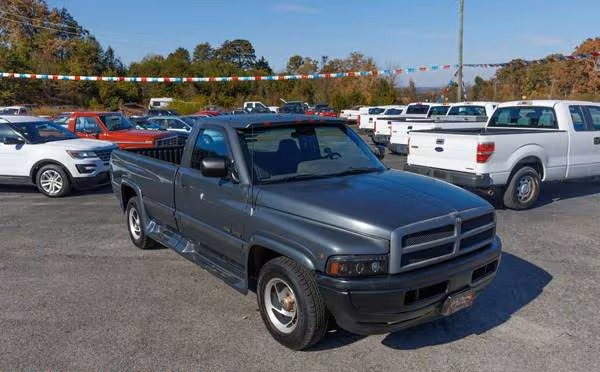
The RAM’s electrical architecture lacks any form of engine immobilizer or electronic security integration. Once ignition circuits are activated, the engine management system operates without authentication requirements or security checks.
This absence of electronic protection means that theft completion requires only a basic electrical bypass, with no additional technical challenges. Physical security features are minimal throughout the vehicle.
Single-pane glass, lightweight construction, and accessible mechanical systems make forced entry straightforward. The trucks’ design prioritizes ease of maintenance and repair over security, inadvertently providing criminals with multiple access and manipulation opportunities.
The popularity of these trucks among criminals has led to extensive knowledge sharing and technique refinement. Criminal networks have developed highly efficient theft procedures specific to RAM trucks, reducing theft time to minimal intervals.
This specialized knowledge has made RAM trucks particularly attractive targets for professional theft operations. Perhaps most significantly, the complete absence of any tracking, monitoring, or recovery systems means that stolen RAM trucks have extremely low recovery rates.
Once theft is completed, these vehicles effectively disappear from law enforcement visibility, making them highly attractive to criminals seeking vehicles with minimal recovery risk.
Also Read: 5 SUVs That Stop Running When Hotwired and 5 That Are Too Easy to Steal

